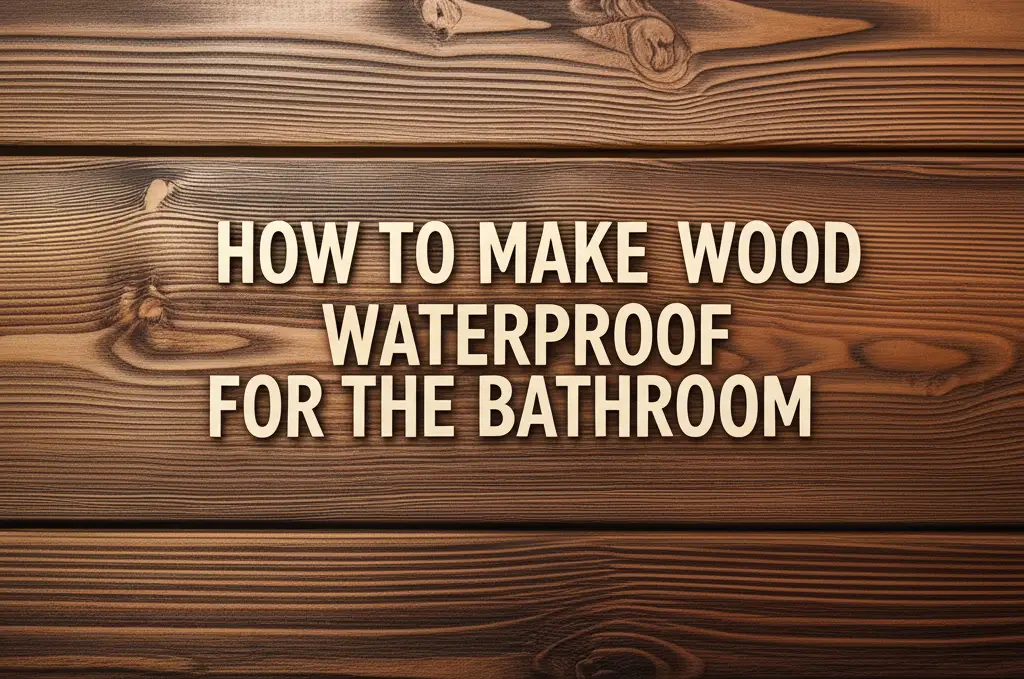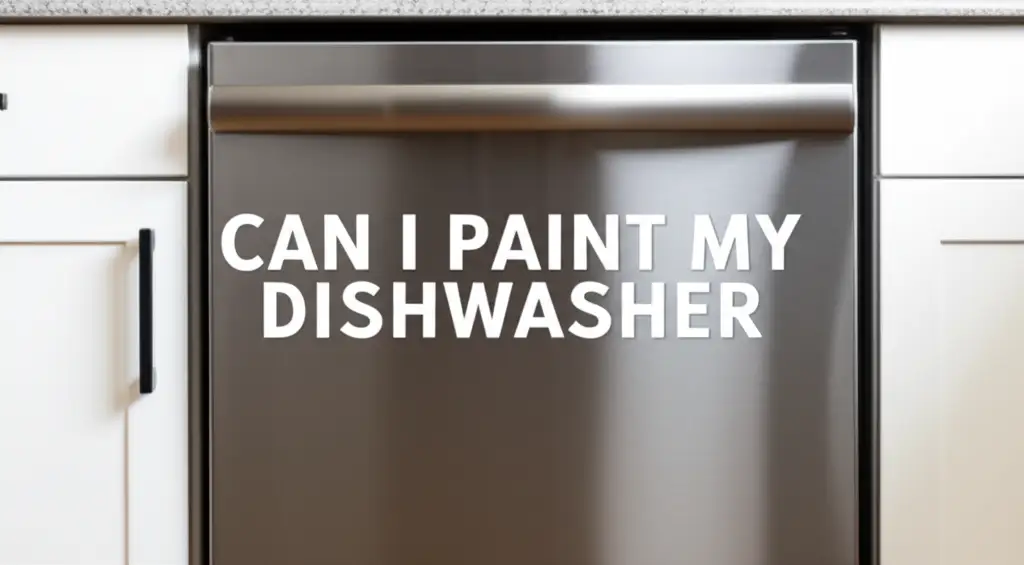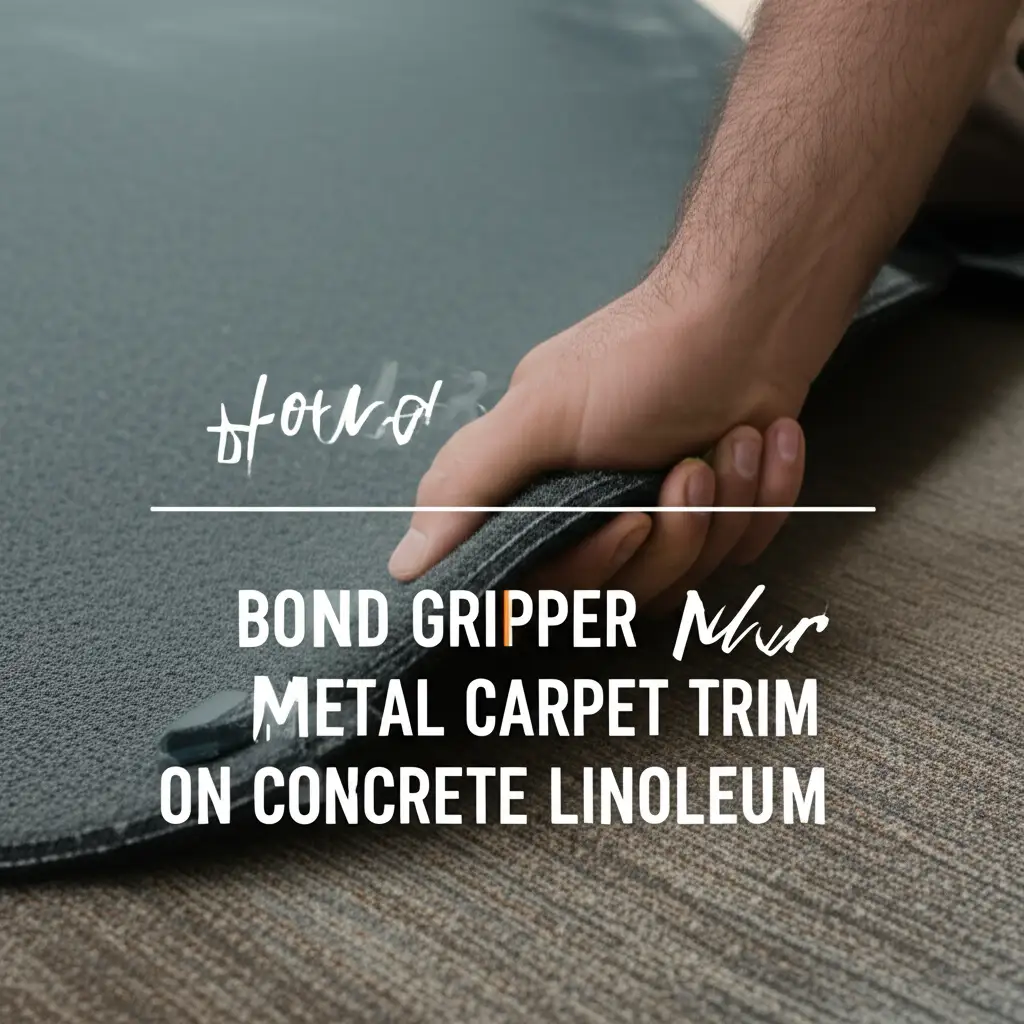· Liora Benning · Home Improvement · 19 min read
How To Make Wood Waterproof For The Bathroom

Waterproofing Wood for Bathroom: A Complete Guide
Imagine stepping into a bathroom that feels like a cozy retreat, not a sterile, cold space. Wood elements can bring warmth and natural beauty to any bathroom design. However, bathrooms are famous for high humidity, splashing water, and steamy showers. This environment poses a real challenge for wood. Untreated wood in a bathroom can quickly warp, rot, or grow mold. No one wants that.
I remember once seeing beautiful wooden vanity ruined by water damage. It truly highlighted the need for proper protection. If you want to use wood in your bathroom, you must make it waterproof. This guide will show you how to make wood waterproof for the bathroom effectively. We will cover selecting the right wood, preparing surfaces, choosing the best sealants, and applying them correctly. You will learn the steps to keep your wood looking great and lasting for years.
Takeaway
Protecting wood in your bathroom is vital for its longevity and appearance.
- Choose wood types naturally resistant to moisture or engineered for it.
- Clean, sand, and repair wood surfaces thoroughly before treatment.
- Apply waterproof sealants like polyurethane, epoxy, or spar varnish.
- Ensure proper ventilation and regular cleaning to maintain protection.
- Reapply treatments as needed for continued water resistance.
To make wood waterproof for the bathroom, you must prepare the surface properly, apply a high-quality waterproof sealant or finish, and maintain it regularly. This process creates a barrier that prevents moisture absorption, protecting the wood from warping, rot, and mold growth in humid bathroom environments.
Why Wood Needs Waterproofing in Bathrooms
Wood adds beauty and warmth to any room. In bathrooms, its natural appeal is very strong. But bathrooms are unique spaces within a home. They have constant moisture, high humidity, and temperature changes. These conditions are hard on wood. If wood is not protected, water can easily seep into its fibers. This leads to several serious problems. I have seen many cases where beautiful wood details turned unsightly because of water.
This section explains why waterproofing wood in the bathroom is not just an option, but a necessity. You are not just adding a layer; you are building a defense. This defense keeps your wood stable and beautiful for a long time. It also protects your home from potential water damage and mold issues related to unprotected wood.
Understanding Bathroom Moisture
Bathrooms are moisture factories. Every shower or bath releases steam into the air. Water splashes from sinks and tubs. Even flushing the toilet can create airborne moisture. This creates a humid environment. Wood is a hygroscopic material. This means it absorbs and releases moisture from the air. When humidity levels are high, wood swells as it takes in water. When levels drop, it shrinks as it releases water. This constant swelling and shrinking cycle puts stress on the wood. It can lead to warping, cracking, and splitting over time.
Direct water splashes are another big problem. A puddle under a sink or water on a wooden floor will quickly soak in. This direct contact is more damaging than humidity alone. It can cause immediate discoloration and softening of the wood. This constant exposure demands robust protection.
Risks of Unprotected Wood
Leaving wood unprotected in a bathroom comes with significant risks. The most common problem is wood rot. Rot is caused by fungi that thrive in moist conditions. Once rot starts, it weakens the wood structure. This compromises its integrity. It can lead to expensive repairs or full replacement.
Mold and mildew growth is another major concern. These fungi also love damp, organic materials like wood. They appear as black, green, or white fuzzy patches. Mold not only looks unpleasant but also releases spores into the air. These spores can cause respiratory problems and allergies. Unprotected wood quickly becomes a breeding ground for these unwelcome guests. Protecting your wood actively prevents these harmful issues.
Choosing the Right Wood for Bathroom Environments
Before you even think about sealants, selecting the right type of wood is crucial. Some wood species handle moisture much better than others. Choosing wisely from the start can save you a lot of effort and money. It makes the waterproofing process more effective and lasting. I learned early on that not all wood is created equal for wet spaces.
This section helps you pick the best wood for your bathroom project. We will look at naturally resistant woods. We will also consider engineered options. These choices form the foundation for a durable, beautiful wooden bathroom feature.
Naturally Resistant Wood Species
Certain wood species naturally resist moisture and decay. These woods often come from tropical regions. Teak is a top choice. It contains natural oils that repel water. This makes it incredibly durable in high-humidity settings. Teak is commonly used for boat decks and outdoor furniture. Its resistance makes it perfect for bathroom vanities or shower benches. Cedar is another excellent option. It also has natural oils that deter moisture and insects. Aromatic cedar also smells pleasant.
Mahogany is also quite resistant to water. It is a dense wood that holds up well. These woods often cost more. However, their natural properties reduce the amount of waterproofing treatment needed. They also increase the lifespan of your bathroom wood elements significantly.
Engineered Wood Options
If solid natural wood is not in your budget, engineered wood products offer good alternatives. Marine-grade plywood is specifically designed for wet conditions. Manufacturers bond layers of wood veneer with waterproof glue. This makes it highly resistant to moisture. It is an excellent choice for subfloors or cabinet carcasses. You can then finish it with a veneer or paint.
Another option is wood-plastic composite (WPC) material. This material mixes wood fibers with plastics. It is fully waterproof and does not rot. W WPC is often used for decking. It also works well for bathroom wall panels or shower surrounds. These engineered options provide stability and water resistance at a lower cost than solid tropical hardwoods. They offer a practical solution for modern bathrooms.
Essential Preparation Steps for Wood Waterproofing
No matter how good your sealant is, it will fail if the wood surface is not prepared correctly. Proper preparation is the foundation of effective waterproofing. It ensures the sealant adheres properly. It also allows the treatment to penetrate uniformly. I always tell people that shortcuts in prep work lead to bigger problems later.
This section details the vital steps to prepare your wood. We will cover cleaning, sanding, and repairing any damage. These steps ensure your wood is ready to absorb and hold the protective layers.
Cleaning and Degreasing Wood Surfaces
Start by thoroughly cleaning the wood. Remove all dirt, grime, and grease. Use a mild detergent mixed with warm water. A soft brush or cloth works well. For stubborn stains or mold, you might need a stronger cleaner. A solution of bleach and water (1:10 ratio) can kill mold. Make sure to rinse the wood thoroughly with clean water. Do not leave any residue.
After cleaning, let the wood dry completely. Any trapped moisture under the sealant will cause problems. It can lead to bubbling or peeling. Use a fan or open windows to speed up drying. Ensure the wood is bone dry before moving on to the next step. A clean surface ensures maximum adhesion for your waterproofing product. For more tips on cleaning bathroom surfaces, you might find this helpful: how to clean bathroom countertops.
Sanding for Adhesion
Sanding is a critical step. It smooths the wood surface. It also creates a profile that helps the sealant stick better. Start with a medium-grit sandpaper, like 120-grit. This removes any old finishes or loose fibers. Then, move to a finer grit, like 180-220 grit. This creates a smoother finish. Sand with the grain of the wood. This prevents scratches.
After sanding, remove all dust. Use a vacuum cleaner first. Then, wipe the surface with a tack cloth. A damp cloth also works, but let the wood dry again if you use water. Any dust left on the surface will prevent the sealant from adhering properly. You want a clean, smooth, and dust-free surface. If you are dealing with a wooden floor, you might need to address old adhesives. Learn how to remove them here: how to remove carpet tape from wood floor.
Repairing Imperfections
Inspect the wood for any cracks, holes, or gaps. These imperfections can trap moisture. They also prevent an even application of the waterproofing. Fill small holes and cracks with wood filler. Choose a filler that matches your wood’s color if you plan to stain it. If you will paint, any wood filler color is fine.
For larger gaps, especially at joints or along edges, use a waterproof wood epoxy or marine-grade sealant. These products cure hard and prevent water penetration. Allow all fillers and sealants to dry and cure fully. Then, sand them smooth, flush with the surrounding wood. This creates a uniform surface for your waterproofing treatment. Proper repairs ensure no weak spots in your protective barrier. Sometimes, cleaning products designed for carpets can affect wood. You can explore more on whether is zep carpet cleaner good for wood for preparation.
Selecting the Best Waterproof Sealants and Finishes
Once your wood is perfectly prepped, the next big decision is choosing the right waterproofing product. The market offers many options. Each has its strengths and weaknesses. The best choice depends on the type of wood. It also depends on the level of moisture exposure and your desired finish. I have used many different products over the years. I know that the right product makes all the difference.
This section explores the most effective sealants and finishes. We will look at their properties. This will help you make an informed decision for your bathroom wood.
Polyurethane and Varnish
Polyurethane is a popular choice for wood protection. It creates a durable, clear, plastic-like film on the wood surface. This film resists scratches, abrasion, and water. You can find oil-based or water-based polyurethane. Oil-based polyurethanes are very durable and create a slightly amber tint. Water-based polyurethanes dry faster and have less odor. They also remain clearer. For bathrooms, I recommend at least three coats of polyurethane.
Varnish is similar to polyurethane. It often contains more resins. This makes it more flexible and resistant to UV light. Spar varnish is a specific type of varnish. It is designed for marine use. This makes it highly resistant to water and extreme temperature changes. Spar varnish is an excellent choice for bathroom wood. Both polyurethane and varnish offer strong surface protection. They effectively seal the wood from moisture.
Epoxy Coatings for Superior Protection
Epoxy is the most robust waterproofing solution for wood. It creates an incredibly hard, clear, and non-porous barrier. This barrier fully encapsulates the wood. Epoxy is often used for boat building. It works by mixing two parts, a resin and a hardener. When mixed, they react and cure into a tough plastic. Epoxy penetrates the wood slightly. It then forms a thick, protective layer on top. This makes it completely waterproof.
Applying epoxy requires careful mixing and application. It is a more involved process than applying varnish. However, the result is superior water resistance. It is ideal for wooden shower surrounds, countertops, or floors. These areas face constant direct water exposure. Epoxy provides maximum protection against moisture damage. It gives you peace of mind that your wood will last.
Natural Oils and Waxes
Natural oils and waxes offer a different approach to waterproofing. Instead of forming a film, these products penetrate into the wood fibers. They make the wood water-repellent from within. Tung oil and linseed oil are common choices. They enhance the wood’s natural grain. They also create a warm, matte finish. Waxes like carnauba wax or beeswax can be applied over oil for added protection.
While oils and waxes offer some water resistance, they are generally not as waterproof as polyurethane or epoxy. They require more frequent reapplication. They also do not provide the same level of surface protection against scratches. I recommend these for bathroom wood that receives only occasional splashes. Examples include decorative trim or the outside of a vanity. For areas with direct water contact, stronger sealants are better.
Step-by-Step Application of Waterproofing Treatments
Applying the waterproofing treatment correctly is as important as choosing the right product. A poor application can lead to a compromised finish. It can also leave your wood vulnerable to moisture. I have learned that patience and attention to detail pay off immensely during this stage. You are building layers of protection.
This section gives you a detailed, step-by-step guide. We will cover priming, applying multiple coats, and ensuring proper curing. Follow these steps for the best results.
Priming the Surface
Some waterproofing products, especially paints or some sealants, benefit from a primer coat. A good primer ensures better adhesion of the topcoat. It also helps block stains from bleeding through. Choose a primer compatible with your chosen waterproofing product. If you are using an oil-based sealant, an oil-based primer is usually best. For water-based products, a water-based primer works.
Apply a thin, even coat of primer using a brush or roller. Allow it to dry completely according to the manufacturer’s instructions. Drying times can vary significantly. Once dry, lightly sand the primed surface with fine-grit sandpaper (220-grit). Then, wipe away all dust with a tack cloth. This creates a smooth, ready surface for your first coat of sealant.
Applying Your Chosen Sealant
Now it is time to apply the main waterproofing product. Stir the sealant thoroughly but gently. Avoid creating bubbles. Apply the first coat evenly. Use a high-quality brush or foam roller. Follow the wood grain for a smoother finish. Do not apply too thickly, as this can lead to drips or uneven drying. A thin, even coat is always better.
Once the first coat is applied, let it dry completely. Drying times vary by product and environmental conditions. Read the label carefully. Once dry, lightly sand the surface again with fine-grit sandpaper (220-grit or higher). This scuffs the surface. It helps the next coat adhere better. Then, wipe off all sanding dust. Repeat this process for two to three more coats. Each additional coat adds to the waterproofing effectiveness and durability.
Curing and Re-coating
After applying the final coat, allow the waterproofing treatment to cure fully. Drying time is when the product feels dry to the touch. Curing time is when it reaches its maximum hardness and water resistance. This can take anywhere from a few days to several weeks. Refer to the manufacturer’s instructions for exact curing times. Do not expose the wood to excessive moisture during the curing period.
During this time, avoid placing heavy objects on the wood. Do not let water sit on it. Proper curing is crucial for the waterproofing to perform as intended. Once fully cured, your wood is ready for bathroom use. The multi-layer application, combined with full curing, provides the strongest possible barrier against water.
Maintaining Waterproofed Wood in Bathrooms
Waterproofing wood is not a one-time event. Even the best treatments need ongoing care. Regular maintenance ensures your protective barrier remains effective. It also keeps your wood looking new for many years. Ignoring maintenance can lead to early failure of the waterproofing layer. This then exposes the wood to damage. I tell my clients that ongoing care is part of the investment.
This section covers essential maintenance tips. We will discuss ventilation, cleaning, and knowing when to reapply your waterproofing. These practices are key to long-term wood protection in your bathroom.
Proper Ventilation is Key
Good ventilation is the first line of defense against moisture in any bathroom. It removes humid air and prevents condensation from building on surfaces. Always use your bathroom exhaust fan during and after showers or baths. Run it for at least 15-20 minutes after you finish. This clears out most of the moisture.
If you do not have an exhaust fan, consider installing one. Otherwise, open a window to let moist air escape. Proper air circulation significantly reduces the amount of moisture that settles on your waterproofed wood. This extends the life of your sealant and prevents mold growth. A well-ventilated bathroom is critical for any moisture-sensitive material, including wood.
Regular Cleaning Practices
Keep your waterproofed wood clean. Use a soft, damp cloth to wipe down surfaces regularly. This removes soap scum, toothpaste, and water spots. Use mild, pH-neutral cleaners. Avoid harsh chemicals, abrasive cleaners, or scrub brushes. These can damage the protective finish. Do not let water sit on the wood surface for long periods. Wipe up spills immediately.
For floors, use a damp mop, not a wet one. Make sure to dry the floor completely after mopping. Consistent, gentle cleaning prevents dirt and grime from building up. Such build-up can trap moisture against the wood surface. This practice helps maintain the integrity of your waterproofing. It keeps your wood looking clean and fresh.
When to Reapply Protection
Even the most durable waterproofing treatments wear down over time. The frequency of reapplication depends on the product used. It also depends on the level of wear and tear. For example, a wooden shower bench might need more frequent reapplication than a vanity cabinet. Look for signs of wear. These include dullness, chipping, peeling, or water spots that no longer bead up. If water soaks into the wood instead of forming droplets, it is time to reapply.
For film-forming finishes like polyurethane or varnish, you might reapply every few years. For penetrating oils, reapplication might be annual. Always follow the manufacturer’s recommendations. Reapplication typically involves light sanding, cleaning, and then applying one or two new coats. This proactive approach ensures continuous protection. You can also complement your wood protection with bathroom rugs to absorb splashes, and you can learn how to make bathroom rugs.
Addressing Common Wood Waterproofing Challenges
Even with careful planning and application, you might face some issues. Waterproofing wood in a humid environment has its unique challenges. Understanding how to fix these problems is crucial. It saves you from starting over. I have encountered most of these issues myself and found solutions.
This section addresses common problems like peeling finishes or incomplete protection. We will discuss how to troubleshoot these issues. This helps you maintain your waterproofed wood’s integrity and appearance.
Dealing with High Humidity
High humidity is the biggest enemy of wood in bathrooms. Even waterproofed wood can struggle if humidity is constantly very high. You might notice the wood feeling clammy or sticky. Or you might see condensation on its surface. The best way to combat this is through excellent ventilation, as discussed earlier. Ensure your exhaust fan works correctly and use it consistently.
Consider adding a dehumidifier to your bathroom if humidity remains an issue. This is especially useful in basements or bathrooms with poor natural airflow. A small, portable dehumidifier can make a big difference. It reduces overall moisture levels. This takes stress off your waterproofed wood. It helps the finish last longer. Controlling humidity is a continuous effort.
Repairing Damaged Coatings
Over time, waterproof coatings can chip, scratch, or peel. This happens due to impact, abrasion, or age. Small chips and scratches can be repaired locally. Lightly sand the damaged area and the surrounding finish. Clean the area thoroughly. Then, apply a small amount of your original waterproofing product. Use a fine brush. Try to feather the edges. This blends the new coat with the old one.
For larger areas of peeling or significant damage, you might need to sand down the entire surface. Remove all the old, damaged coating. Then, reapply the waterproofing from scratch. This is a more involved process. But it ensures a uniform and complete protective layer. Always follow the original preparation and application steps for the best repair. Address damage quickly. This prevents water from reaching the unprotected wood underneath.
Preventing Mold and Mildew on Sealed Wood
While waterproofing helps, mold and mildew can still grow on the surface of a sealed finish if conditions are right. They thrive on moisture and organic residue like soap scum. Regularly clean your waterproofed wood surfaces. Use a mild disinfectant spray or a diluted bleach solution (1 part bleach to 10 parts water) to wipe down surfaces. Make sure to rinse and dry completely.
Ensure good air circulation. As mentioned, a functioning exhaust fan is vital. Also, wipe down surfaces after heavy use. Do not let puddles of water sit. If mold appears, clean it immediately. Do not let it spread. A clean, dry, and well-ventilated bathroom is your best defense against mold, even on sealed wood.
FAQ Section
Q1: Can I use regular wood stain in a bathroom?
Regular wood stain alone does not make wood waterproof. Stain changes the wood’s color. It offers little to no protection against moisture. After staining, you must apply a separate waterproof finish. This finish, like polyurethane or epoxy, creates a protective barrier. Always apply a sealant over stain for bathroom use.
Q2: How often do I need to reapply wood waterproofing?
Reapplication frequency depends on the product and usage. High-traffic areas or those with direct water contact might need reapplication every 1-3 years. Surfaces like cabinets might last 5-10 years. Film-forming finishes show wear as chipping or dullness. Oils need reapplication when water no longer beads on the surface.
Q3: Is paint enough to waterproof wood?
Paint offers some water resistance, but it is not truly waterproof on its own. Water can eventually penetrate paint, especially at seams or if the paint chips. For bathroom wood, always choose a high-quality, mold-resistant paint. Then, apply a clear waterproof sealant over the paint. This gives maximum protection.
Q4: What’s the difference between water-resistant and waterproof?
Water-resistant means a material can resist water penetration to some degree. It can handle splashes or light exposure. Waterproof means a material forms an impenetrable barrier to water. It can withstand direct and prolonged water contact. For bathrooms, especially wet areas, aim for truly waterproof solutions.
Q5: Can I waterproof existing wooden bathroom furniture?
Yes, you can waterproof existing wooden bathroom furniture. First, clean and sand the furniture thoroughly. Remove any old finishes that are peeling. Repair any damage. Then, apply several coats of a waterproof sealant like spar varnish or epoxy. Ensure good ventilation during application and curing.
Conclusion
Making wood waterproof for the bathroom is a smart choice. It protects your beautiful wooden elements from the harsh realities of moisture and humidity. We covered everything from picking the right type of wood to applying the best sealants. You now know that preparation is key, and ongoing maintenance ensures long-term success. I hope this guide helps you feel confident in protecting your wood.
You can have the warmth and beauty of wood in your bathroom without worry. By following these steps, you create a durable barrier against water damage, rot, and mold. So, gather your materials, prepare your surfaces, and apply your chosen waterproofing. Start your project today. Give your bathroom wood the protection it deserves.





